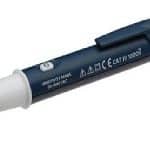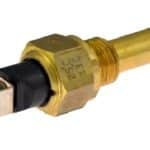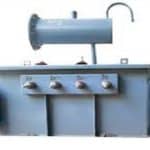A voltage detector is a significant electrical safety tool that is used by electricians or utility workers who work with electrical systems & equipment. In the electrical industry, these devices play a key role in detecting the occurrence of electrical energy within conductors, electrical equipment & power lines. So they provide an effective, secure & simple method to verify whether any electrical device is de-energized or not before any work … [Read more...]
Earth Tester : Construction, Working, Types, Differences, Specifications & Its Applications.
The first earth tester was invented in the year 1950 by Evershed and Vignoles Meggers who made the initial insulation as well as earth resistance testers. Analog grounding tester like М416 is the most frequently used in the USSR. Many organizations from the 21st century manufacture digital earth resistance meters as well as testers. The main function of this instrument is to decide the capability of the grounding for an electrical system. By a NEC … [Read more...]
Miniature Circuit Breaker : Construction, Diagram, Working, Types, Wiring & Its Applications
Protection is the main concern while choosing any electrical device or appliance because when the power varies or excess current supplies, then it causes harm that results in a short circuit or an overload. So, it is necessary to integrate a device as a protection element to give over current protection to the device. The most common safety device used for protecting the circuit is a fuse which includes a metal wire/strip that dissolves whenever an … [Read more...]
Temperature Switch : Construction, Circuit, Working, Types & Its Applications
Temperature sensors and temperature switches are the two most significant devices utilized in different industries & applications for monitoring as well as controlling temperature. But the main difference between these two is; that a temperature switch is an electronic device used for opening or closing an electrical circuit whenever it reaches a particular temperature whereas a temperature sensor is a device used to measure its surrounding temperature … [Read more...]
Resistance Thermometer : Construction, Working, Types, Circuit, Advantages & Its Applications
Generally, a metallic conductor’s electrical resistance increases when temperature increases. These conductors are used by resistance thermometers to measure the temperature. A resistance thermometer is a precise temperature sensor used to determine temperature by the difference within a conductor’s resistance. This thermometer is best for measuring temperature with high precision due to good linear characteristics above a wide range of temperatures and … [Read more...]
Wire Gauge : Selection, Chart, Types & Its Uses
The wire gauge is a significant factor in selecting an electrically conductive wire for a specific application but, the suitable gauge mainly depends on different factors. Thicker wires are mainly used in higher amperage rating circuits for handling the load very efficiently & avoid extreme buildup of heat. Using very thin wires within the particular circuit amperage can lead to wire malfunction or electric fires. These issues can be overcome by … [Read more...]
Shell Type Transformer : Construction, Working, Differences & Its Applications
A transformer is an electrical device, used to enhance (step-up) or reduce (step down) the voltage & current in an AC system without a change within the frequency of AC in between electrical circuits. The output voltage in a step-up transformer is increased & the output current will be decreased whereas the output voltage in a step-down transformer is decreased & the output current will be increased to maintain the system’s input & output … [Read more...]
Photoelectric Effect : Derivation, Circuit, Characteristics & Its Applications
The phenomenon known as the photoelectric effect stands as a testament to the astonishing and sometimes perplexing behavior of light. It was first observed by Heinrich Hertz in 1887. Hertz's experiments laid the foundation for the subsequent work on the photoelectric effect by other scientists especially it was Einstein who, in 1905, provided the groundbreaking explanation of the photoelectric effect, demonstrating that light behaves not only as a wave but … [Read more...]
Electric Tariff : Working, Types, Example, Characteristics, Advantages & Its Disadvantages
Generally, we need different kinds of equipment machinery, such as turbines, alternators, and boilers for electricity generation in power stations. Consequently, the operation and arrangement of these devices incur additional costs. These costs are passed on to customers through a fixed charge included in their bills, with the tariff rate primarily determined by the cost of electricity generation. Once electricity is produced, the transmission process … [Read more...]
Electrical Outlet : Working, Types, Circuit, Working, Wiring & Its Advantages
The electric power supply is generally brought into your home from your local utility using electrical cables & is finished at the distribution box with CBs or circuit breakers. To utilize this electric supply, it is distributed all over the house either through external conduits or in-wall & reaches light bulb connectors as well as electrical outlets. An Electrical Outlet is also known as an electrical receptacle and is the main power source … [Read more...]









